Shipping container homes are gaining popularity as a sustainable and innovative solution for modern living. These dwellings repurpose steel shipping containers, which once transported goods across oceans, into habitable spaces.
This trend not only addresses issues of sustainability but also offers a chance for architectural creativity. With their modular design, shipping containers can be stacked and customized, offering flexibility in home layout and size.
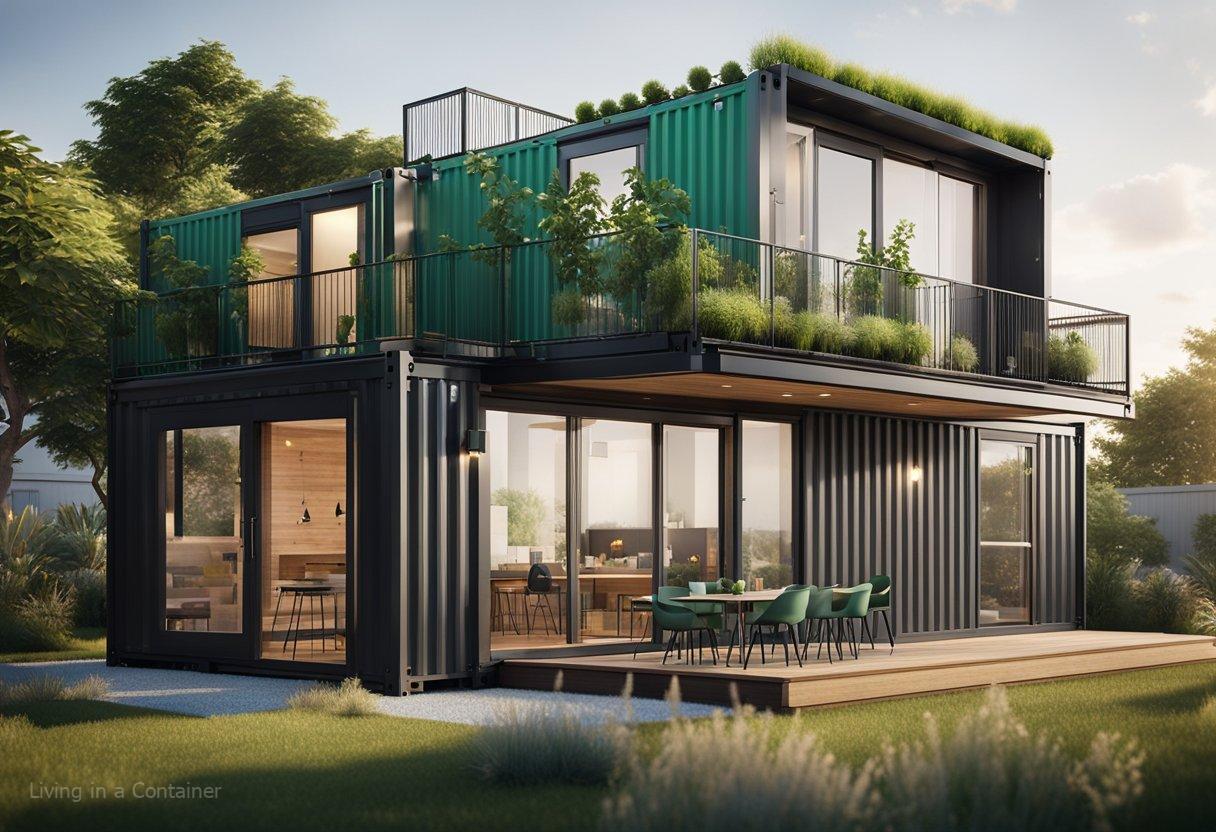
The affordability and availability of shipping containers make them an attractive option for those looking to build their own homes.
They are designed to withstand the rigors of shipping, making them durable and secure as a foundation for construction. Container homes can range from simple, small abodes to larger, more luxurious structures.
They are a testament to the potential of adaptive reuse, transforming a utilitarian object into a comfortable, eco-friendly, and stylish living space.
By exploring various container home ideas, individuals can discover the wide array of designs possible with these versatile units. Whether aiming for a cozy tiny home or a spacious dwelling, there is a container home design to match almost every need and preference, showcasing the versatility and innovative potential of these steel structures.
Understanding Container Homes
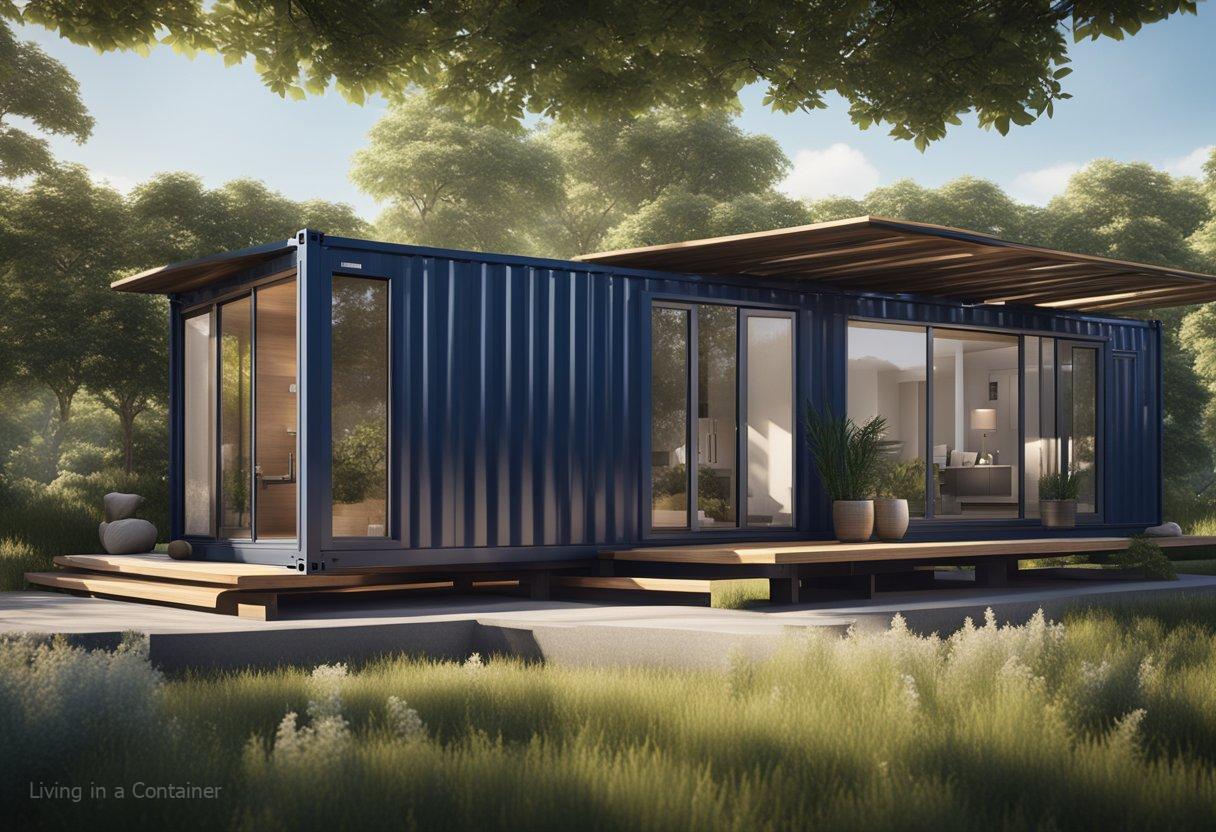
Container homes, a subset of the tiny home movement, have emerged as a sustainable living choice that utilizes shipping containers as the core building blocks. They are applauded for their eco-friendliness and affordability.
History and Evolution of Shipping Container Homes
The concept of using shipping containers for housing originated as a creative solution to repurpose these durable structures once their service in sea freight was over.
Initially seen as a basic form of shelter, the container house design has evolved into sophisticated homes ranging from simple tiny homes to luxurious abodes.
They have gained popularity due to their strength, availability, and the shift towards recycled material use in construction.
RELATED
- 3 Bedroom Shipping Container Home Design
- 1.3 Million Viewers Can’t Be Wrong: Amazing 4-Container Home Design
- 5 Container Home Designs and Plans to Inspire
Benefits of Choosing Container Homes
Selecting a shipping container home implies embracing an eco-friendly approach to living. They are inherently sustainable, employing recycled shipping containers, thus reducing waste.
These homes are also typically more affordable than traditional housing, minimalistic in design, and can be a position for reducing one’s carbon footprint.
The modular nature of containers allows for a variety of sustainable living options, including off-grid setups.
Key Benefits:
- Affordability: Lower cost than traditional homes
- Eco-Friendly: Utilization of repurposed containers
- Durability: Built to withstand harsh conditions
- Modularity: Offers flexibility in design
Different Types of Container Homes
Container homes come in many forms, each highlighting different aspects of sustainable living. A single shipping container can serve as a tiny home or guest house, while multiple containers can be stacked or joined to create larger, more elaborate structures.
The container house design ranges from the basic, preserving the industrial look, to highly customized versions that resemble conventional homes, complete with modern amenities and architectural flair.
Types of Container Homes:
- Single Container Homes: Compact and efficient
- Multi-Container Homes: Larger families or needs
- Custom Container Homes: Tailored to owner preferences
- Prefab Container Homes: Factory-built and easy to assemble
Container homes serve as a testament to modern architectural innovation, leveraging the concept of recycled and environmentally friendly living spaces. They not only challenge traditional housing norms but also offer a versatile and sustainable housing solution.
Planning Your Container Home
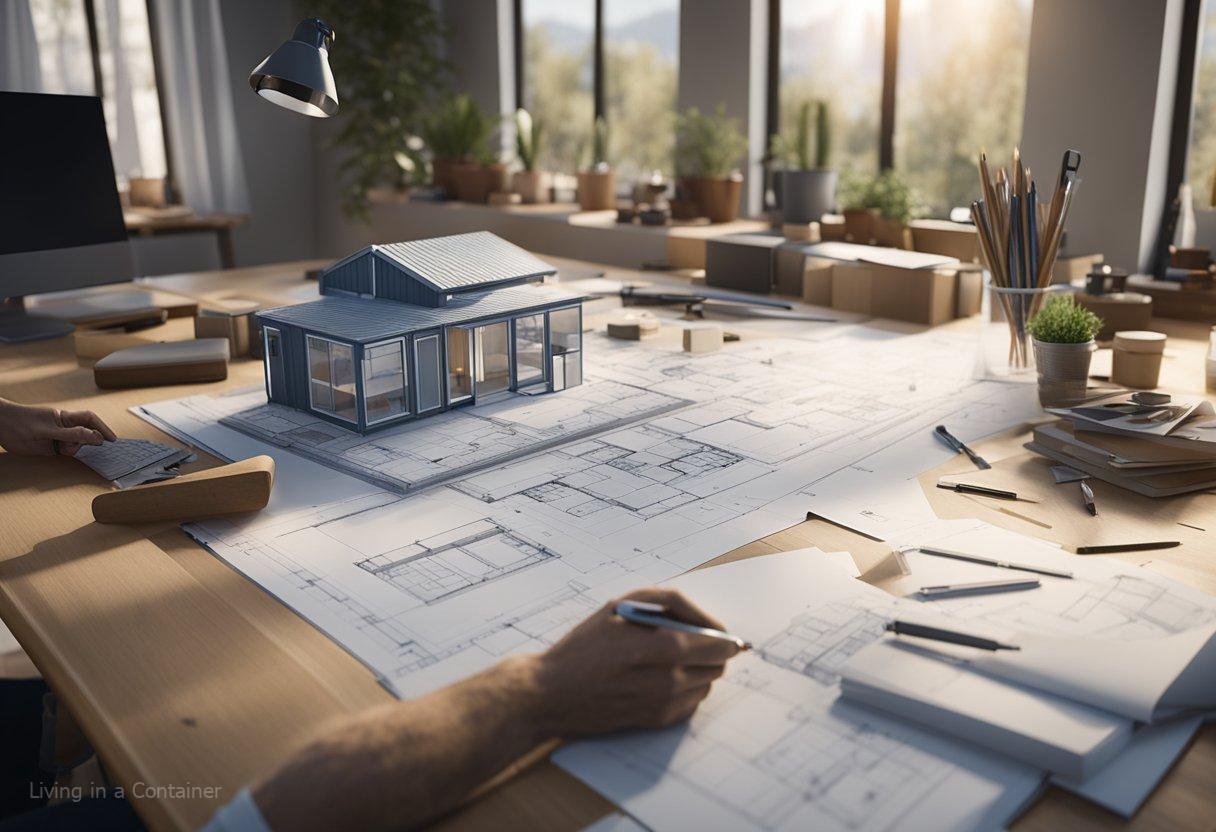
When embarking on the journey of constructing a container home, it is essential to navigate the maze of legalities, select suitable containers for longevity, and craft a floor plan that embodies functionality and design.
Zoning, Permits, and Legal Considerations
One cannot overstress the importance of legal due diligence. Prior to purchasing a shipping container, one should consult with local authorities regarding zoning laws, building codes, and required permits. This step ensures that one’s container home complies with all legal requirements and avoids costly legal headaches.
Selecting the Right Shipping Container
The heart of a container home lies in its fundamental structure — the shipping container. Corten steel containers are preferred due to their resilience against weathering.
One can choose between new or used containers, but it’s crucial to inspect for structural integrity and the absence of harmful chemicals.
The decision hinges on not just the budget, but also on the home design and functionality goals, whether the aim is a compact living space or a more expansive abode.
Designing Efficient Floor Plans
Home plans for container homes should make intelligent use of the small space. An efficient floor plan is key, utilizing every square foot. Consider the incorporation of built-in storage and multi-functional furniture to maximize space.
Companies such as CW Dwellings offer models that exemplify creative layout solutions that fit within a variety of budgets and styles. Chattels within the container must serve a purpose and fold into the overall container house design.
Design and Style Concepts
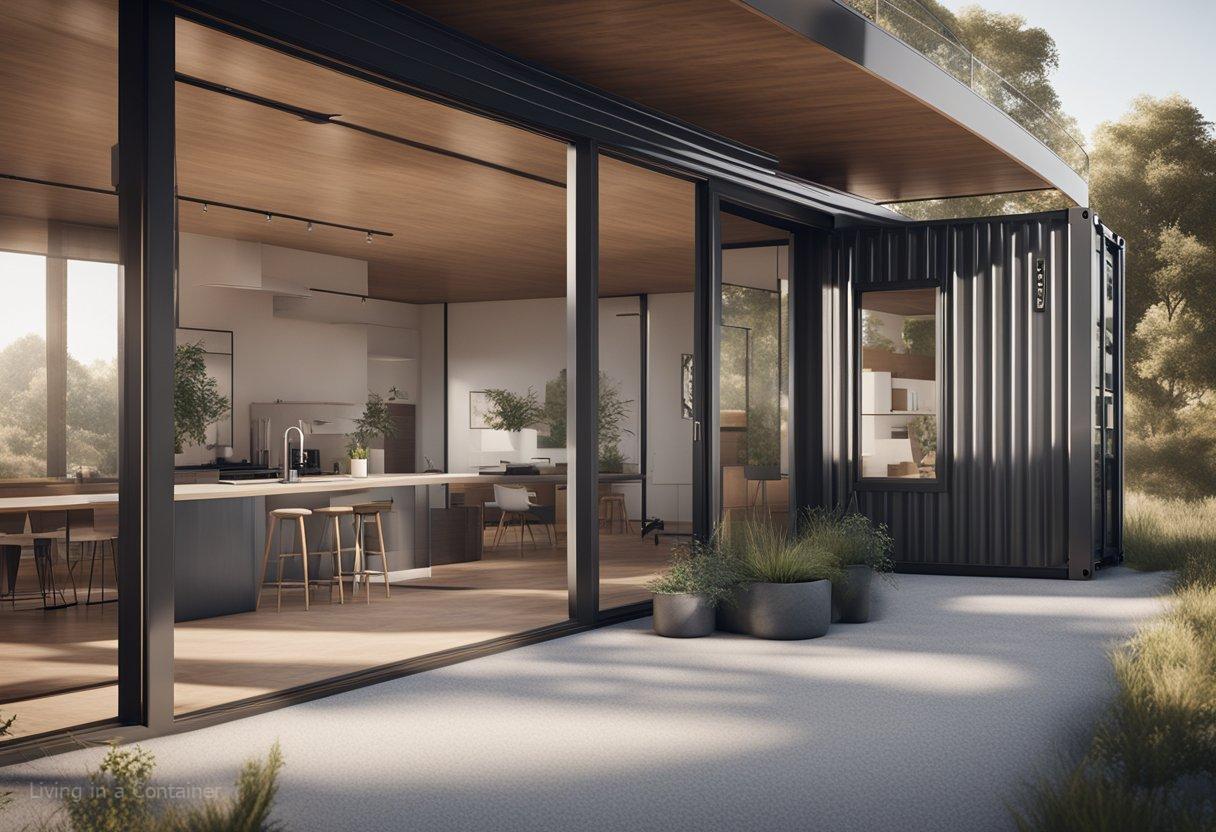
Innovative design and style concepts are pivotal in creating a comfortable, functional, and aesthetically pleasing container home. They focus on the intelligent use of space, light, and decor to provide maximum utility and visual appeal within the limited footprint of shipping containers.
Maximizing Small Spaces
Container homes often have a compact design necessitating clever spatial strategies. The key is to use built-in furniture and shelves to reduce clutter, creating a streamlined environment that exemplifies simplicity. For instance, furniture that doubles as storage can be both practical and stylish. Utilizing wall space effectively with hanging elements and foldable furniture also contributes to an organized and spacious feel in a small space.
Incorporating Natural Light and Ventilation
Strategic placement of sliding doors and ceiling windows can flood a container home with natural light, creating an illusion of space and openness. Adequate ventilation is achieved through these openings, which also integrate the outdoor environment with the interior. The use of mirrors to reflect light further amplifies the sense of high ceilings and spaciousness.
Choosing Interior Decor and Themes
When it comes to interior design, the decor of a container home can reflect a range of styles from rustic to minimalist, or traditional home aesthetics.
For a rustic look, one might incorporate reclaimed wood and vintage pieces, whereas a minimalist design might focus on monochromatic color schemes and clean lines. For those preferring a farmhouse vibe, the inclusion of soft, cozy textiles and warm colors can offer a comforting and stylish atmosphere.
The overarching theme in container homes revolves around simplicity and efficiency without compromising on style and personal expression.
RELATED
- Innovative Small Scale Living Tiny Container Home Ideas
- Shipping Container Home Floor Plan Ideas 15 Stunning Plans!
- Exploring a Cozy, Modern Container Home Design
Innovative Features and Additions
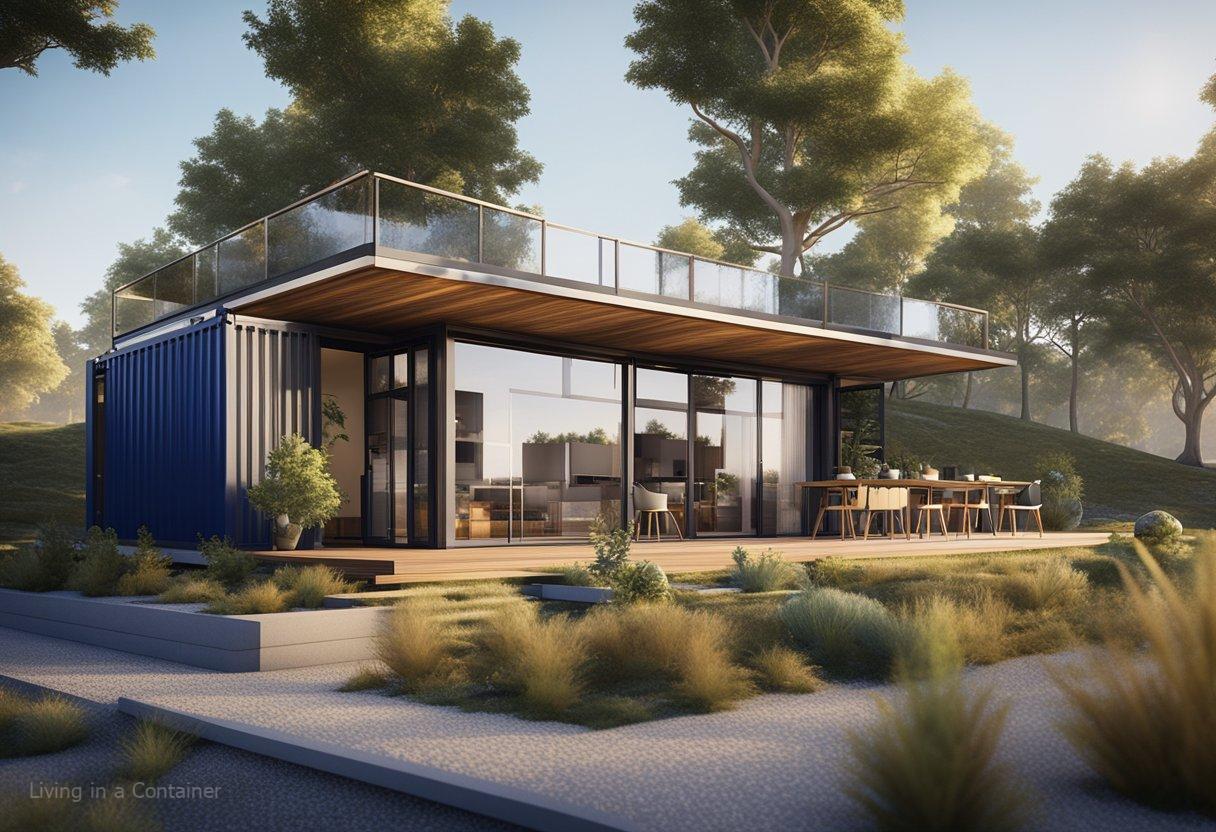
Designing container homes offers an opportunity to incorporate cutting-edge features that enhance functionality and sustainability. These additions are not only practical but also aim to minimize the environmental impact of construction.
Eco-Friendly Elements for Sustainable Living
Container homes lend themselves well to sustainable living by virtue of their very design, which often repurposes recycled shipping containers. A key feature in these homes is the inclusion of eco-friendly materials such as bamboo for flooring and solar panels for energy. Green roofs are also a popular addition, providing insulation and helping to manage rainwater.
Creative Storage Solutions
Efficient use of space is paramount in a container home. Creative storage solutions such as built-in wall shelving and under-bed compartments can significantly reduce clutter. Innovative ideas like pocket doors save space, while wall-mounted fans eliminate the need for bulkier, floor-based units.
Multi-Functional Furniture and Fixtures
Furniture that serves dual purposes is a smart addition to any container home. Convertible couches that transform into beds, and folding desks which retract when not in use, are practical solutions. Similarly, a double-sided fireplace can serve as a room divider and a source of warmth for adjacent spaces, exemplifying the essence of functional design in compact living.
Architectural Elements and Customization
Container homes offer a blend of sustainability and creativity, with diverse architectural elements and customization options. They allow architects and homeowners to experiment with unique designs, built-in structures, and climate-adaptive features.
Unique Exterior Design Options
Container homes stand out with their ability to incorporate unique exterior designs. Corten steel, often used in shipping containers, provides not only durability but also a distinct industrial aesthetic that can age to a characteristic patina.
Some innovative designs by architectural firms like Poteet Architects include the use of glazed outer walls, transforming the rugged containers into modern and stylish residences. Additionally, firms like Backcountry Containers specialize in customizing exteriors with options such as:
- Wood, glass, or metal cladding
- Barn doors for a rustic touch
- Roof gardens for added green space
Custom Built-In Structures
For the interior, built-in furniture is a hallmark of container home customization. Backcountry Containers and similar companies craft interiors that optimize space through multifunctional structures. For example, a bed frame with integrated drawers or a fold-down desk conserves space and adds functionality. The opportunities for built-in structures include:
- Foldable workspaces
- Storage compartments in walls or floors
- Integrated seating with hidden storage
Adapting to Climate: Weatherproofing
Weatherproofing is crucial in container home designs to ensure they can withstand diverse climates, including harsh conditions like hurricanes.
This involves thorough insulation, waterproofing, and structural reinforcements. Corten steel, the material of choice for many shipping container homes, is inherently weather-resistant, making it suitable for such adaptations. Common weatherproofing modifications consist of:
- High-quality insulation to maintain internal temperature
- Water-resistant coatings to prevent rust and leakage
- Reinforced framing for stability against high winds
Real-Life Container Home Inspirations
Innovative design and sustainable living merge in the concept of shipping container homes, offering a source of inspiration for those looking to transform steel boxes into habitable spaces. Architects and homeowners alike have turned these once mundane structures into architectural marvels, showcasing versatility and creativity.
Case Studies of Successful Container Homes
One prominent case is the Sustainable Guest House created by Poteet Architects, which repurposes a shipping container into a stylish and eco-friendly living space.
This transformation highlights the structural integrity containers bring to architectural projects. Here, one can explore the intricate details of how a container was turned into a cozy, functional guest house, complete with a rooftop garden and contemporary interior design.
Another remarkable example is the ingenious use of shipping containers to create multi-level homes. The container ridges contribute to the aesthetic, offering a nod to the home’s industrial origins while providing the strength needed to safely stack multiple units.
This approach displays how designers are not only focused on space-saving solutions but also on delivering bold architectural statements through carefully crafted container homes.
Turning Containers into Commercial Spaces
Shipping containers offer exceptional versatility, which extends beyond residential use. They’ve been ingeniously used to create commercial spaces, including Airbnb rentals, cafes, and pop-up shops.
By offering a blend of modern design and portability, containers serve as an intriguing focal point that can attract customers looking for unique experiences.
A striking example of this repurposing involves the transformation of containers into Airbnb venues. These hosts take advantage of the compact and mobile nature of container homes to offer guests a distinctive stay that combines both sustainability and style.
The popularity of container-based Airbnb properties is a testament to their appeal as innovative and environmentally conscious travel options.
Conclusion
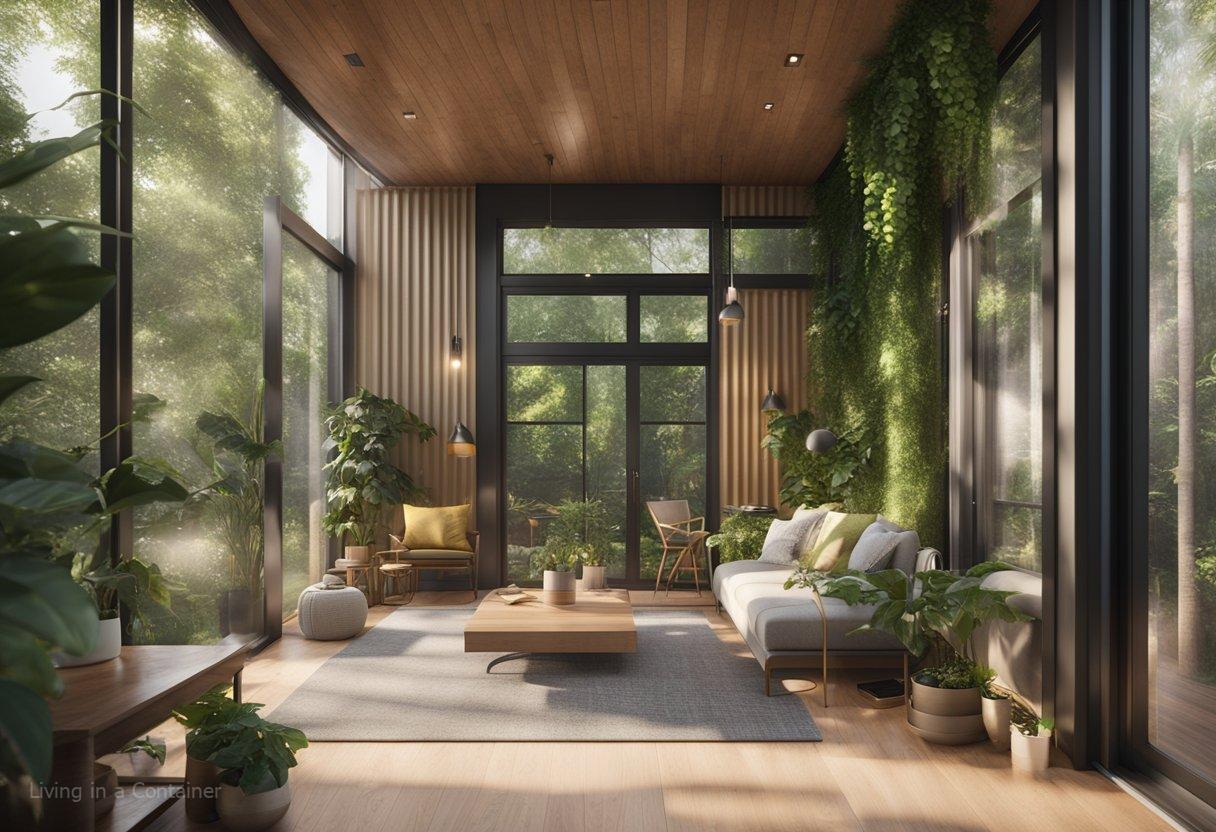
Exploring the transformative potential of shipping container homes, one discerns how these structures encapsulate the essence of sustainable living while often being extremely affordable. This innovative approach to housing provides not only a cost-effective solution but also a platform for environmental stewardship.
Final Thoughts on Container Home Living
Shipping container homes have emerged as a testament to creative architectural design, with the ability to repurpose industrial materials into comfortable living spaces.
They lay a foundation where affordability meets sustainability, reflecting a growing consciousness towards economical and eco-friendly living solutions.
The ingenious use of these containers highlights not just a trend, but a meaningful shift in one’s lifestyle choices, fostering a blend of minimalism and functionality.
In the pursuit of sustainable living, shipping container homes showcase the innovative reuse of materials that significantly reduce the carbon footprint.
This practice aligns with contemporary efforts to protect the environment, making these homes increasingly popular among those looking to minimize their ecological impact.
Moreover, the cost advantages are quite clear. Shipping container homes typically require a lower budget compared to traditional housing. This cost-efficiency can make homeownership more accessible and reduce financial strain.
The allure of container homes lies in their simplicity and the profound statement they make about the attainability of affordable, sustainable housing in modern society.
